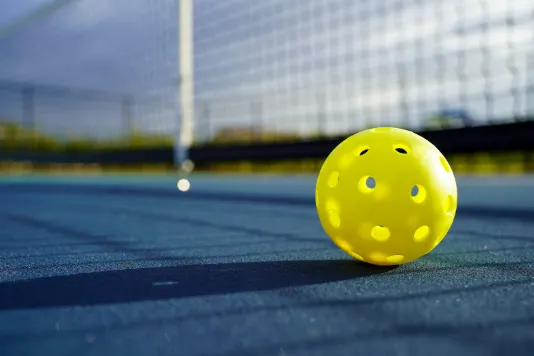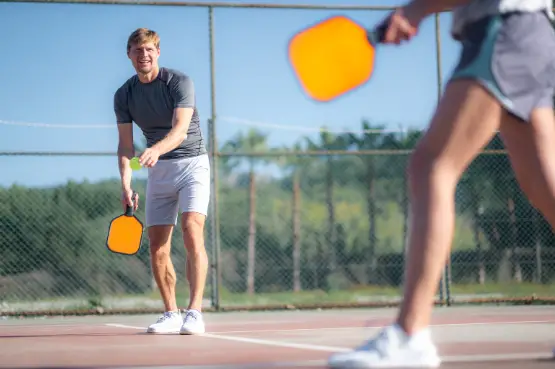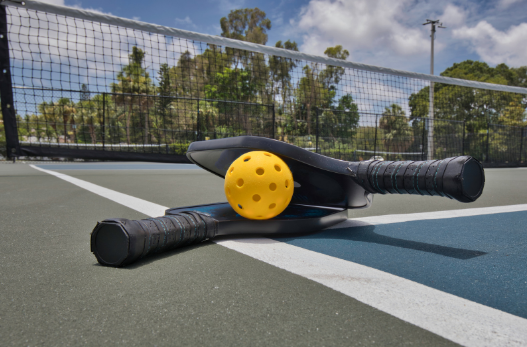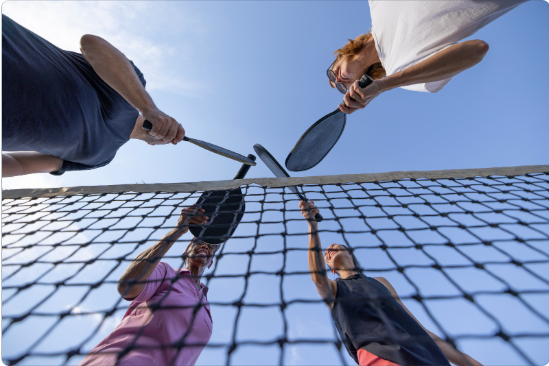Pickleball Scoring Rules
Understanding pickleball scoring rules is essential for both novice and experienced players. This comprehensive guide aims to demystify the scoring system, offering insights for singles and doubles matches, and ensuring you’re well-equipped to enjoy this rapidly growing sport.
Here’s a sample score table for a pickleball doubles match. This table illustrates the progression of scores between two teams (Team A and Team B) over several rounds of play.Here’s a sample score table for a pickleball doubles match. This table illustrates the progression of scores between two teams (Team A and Team B) over several rounds of play.
| Round | Team A (Server) | Team B (Receiver) | Serving Player (A1/A2 or B1/B2) | Notes |
| 1 | 0 | 0 | A1 | initial serve by Team A |
| 2 | 1 | 0 | A1 | Team A score a point |
| 3 | 2 | 0 | A1 | Team A score another point |
| 4 | 2 | 0 | A2 | Team A scored another point |
| 5 | 2 | 1 | B1 | Team B wins the serve And scores a point |
| 6 | 2 | 2 | B1 | Serve Switches to the second player of team A |
| 7 | 2 | 2 | B2 | Serve Switches to the second player of team B |
| 8 | 3 | 2 | A1 | Team A wins the serve back and score a point |
The Basics of Pickleball Scoring
Pickleball scoring can seem complex, but it follows a logical system. Points are scored only by the serving team and can be won in singles and doubles matches. The server announces the score before serving, and the game progresses with the receiver aiming to return the serve.
Traditional vs. Rally Scoring: Traditional scoring involves winning points only when serving, while rally scoring allows points to be won at every rally, making the game faster and more dynamic.
Scoring Rules in Doubles
In doubles, understanding the double bounce rule is crucial. The ball must bounce once on each side before allowing volleys, promoting longer rallies and strategic play. The serving team can score points, and the server continues to serve until a fault occurs.
Strategies for Effective Scoring: Positioning and communication are vital. Teams should focus on minimizing unforced errors and maximizing opportunities to attack, especially during the serve.
Navigating Singles Scoring
Singles scoring in pickleball is straightforward. The server is the only player who can score, emphasizing the importance of a strong serve and aggressive play to win points.
Mastering Singles Scoring: It is key to understand the opponent’s weaknesses and capitalize on them. Players should focus on consistency, placement, and pace to dominate in singles matches.
Advanced Insights
Rally scoring rules have introduced a new dynamic to pickleball. Every rally can result in a point, making each play crucial. The evolution of scoring rules reflects the sport’s growth and the need for more engaging matches.
Future Changes: As pickleball continues to evolve, players can expect refinements in scoring rules to enhance competitiveness and spectator enjoyment.
FAQs
- How is pickleball scoring done? Points are scored by the serving team and are awarded based on faults by the opposing team.
- What is traditional scoring in pickleball? It allows points to be scored only by the serving team, emphasizing the importance of holding serve.
- How many points are scored in pickleball? Games are typically played to 11, 15, or 21 points, with the winning team needing a two-point lead.
- What is the scorekeeper’s role in pickleball? The scorekeeper announces the score before each serve, ensuring all players are aware of the current standings.
- Are pickleball scoring rules changing? Rules evolve to enhance the game’s competitiveness and enjoyment, with recent introductions like rally scoring reflecting this trend.
Conclusion
Mastering pickleball scoring is essential for players at all levels. Whether engaging in friendly matches or competitive tournaments, a solid grasp of the scoring rules enhances the playing experience and contributes to the strategic depth of this exciting sport.







